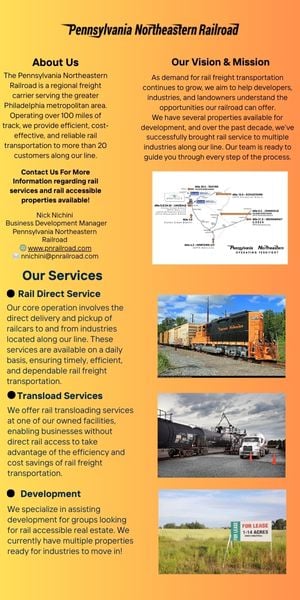A Community-Minded Approach to Industrial Developments

Economic growth is vital to communities, but it’s important to consider other factors as well.
As municipalities evaluate how to market vacant or underutilized industrial parks to make them viable for the future, they are reconsidering the old way of doing things. In the past, the focus was on luring a new manufacturer and a new tax base. Now, the conversation is different. It’s still about creating jobs and bringing new businesses, but community engagement and sustainability are at the forefront.
Development Through Collaboration
A desirable location and ample workforce are no longer the only criteria for many companies. Today, more cities want to create walkable spaces and natural amenities that attract workers searching for live/work/play environments. As a result, communities are being more selective and thinking more holistically about the impact of large industrial developments. For developers, that means engaging with the community and talking to residents, stakeholders and other businesses about what types of investments will create a sustainable mix of growth and development.
Lexington, Kentucky’s plans for the Coldstream 200-acre industrial site is one such example. It was the longtime home of University of Kentucky’s Coldstream Dairy Research Farm and will be transferred to the city this year as a part of a historic land swap that was negotiated in 2017.
The site is adjacent to the university's 735-acre Coldstream Research Campus, which hosts more than 50 companies and organizations in sectors such as biotech, pharmaceuticals and other high-tech industries.
The Coldstream industrial site was identified as part of the city’s strategic growth plan in 2018 because residential developments are already being eyed adjacent to the industrial site. Future developments with a focus on workforce housing will begin opening to new residents in 2022, and the aim is to continue that momentum by developing a live/work/play community, which is highly desired by today’s workforce.
In 2021, Lexington set out to create a master plan to envision the future of the Coldstream site that considers the opportunities for residents of the community and attracts new business and tax dollars. It started with community engagement — town halls, surveys and design charrettes, both virtual and in-person — to determine how to attract the workplace of the future to the area.
Next, an accounting was done to determine the positive attributes of the site. It’s located near the intersection of an interstate and a major corridor. In addition to the presence of the existing Coldstream Research Campus, two well-established residential neighborhoods are adjacent to the site. Located in an environmentally sensitive watershed, the site contains two streams, as well as a common border with a shared-use greenway trail that connects downtown Lexington with nearby neighborhoods and parks.
During the ongoing community engagement sessions, the first thing the city heard from residents is how valuable preserving and enhancing these elements are to the future of the site. The community wanted to preserve usable space, such as trails and connections to existing greenways, and it also wanted to make sure that preserving local habitats and ecology was a top priority.
The Approach
To chart a new course, the city took an approach that can work for others looking to reinvent underutilized properties.
Think big picture. When looking for the right location, approach those conversations as a partner in the deal, not a transaction. Taxable square footage isn’t the only metric being considered anymore. Look to play on the strengths of the entire development. A small investment in community outreach can pay big dividends and help persuade members of the community that are initially skeptical of development.
Develop a mission statement. What’s the larger mission? Growing a business is important, but how can it be done to help the community thrive? Work together to develop a mission statement to guide decision-making.
Engage the local community early. What’s in it for them? Listen to residents to see where there are opportunities to make an impact across the community. Think about what other investments might make sense to make the deal thrive.
Build on existing assets. In some cases, there are already existing businesses or other resources present in the area. Consider the following:
- Partnership opportunities with a nearby university.
- Conversions of underused facilities such as warehouse space that can be retrofitted for loft-style apartments.
- Promoting multimodal network connectivity.
- Protecting and enhancing natural resources and landscapes.
Be proactive. Determine what infrastructure improvements are needed for the area to flourish in the future. Consider developing or expanding a network for accessible transportation options (think: mass transit, greenways, bike lanes, etc.). Where possible, look for ways to incorporate green space or open space into that planning.
Look at quality-of-life improvements. Work together to consider how the local environment might be improved to help attract and retain high-paying jobs.
Communicate the value of these investments, and the future developer or end user will see the win-win opportunity that a site like this presents. Lastly, communicate what has been created and the potential for a better quality of life for all residents of the community.
Matt Mulick, AIA, NCARB, is a senior architect at Gresham Smith; Erin Hathaway, PLA, ASLA, is a senior landscape architect at Gresham Smith.




